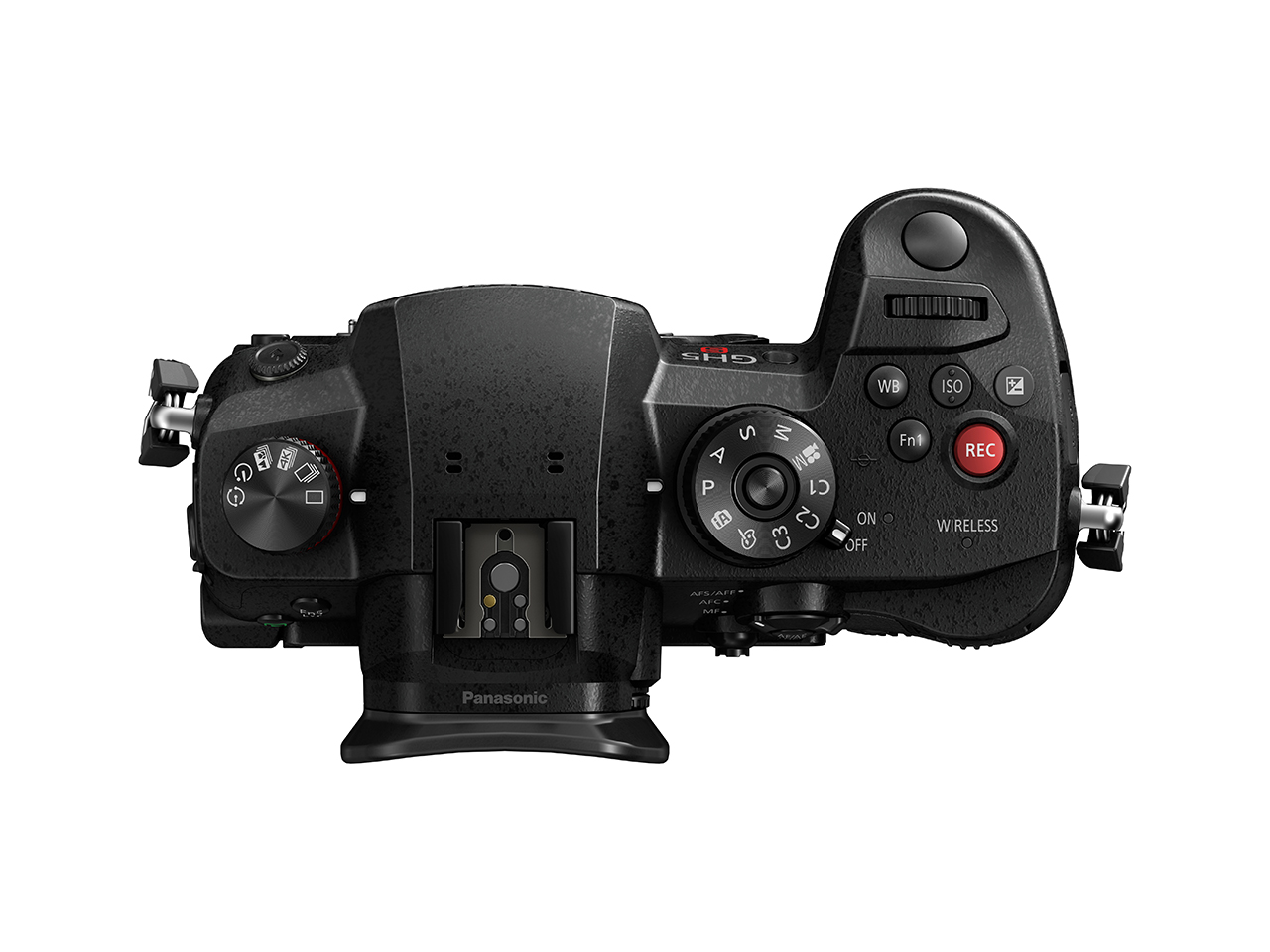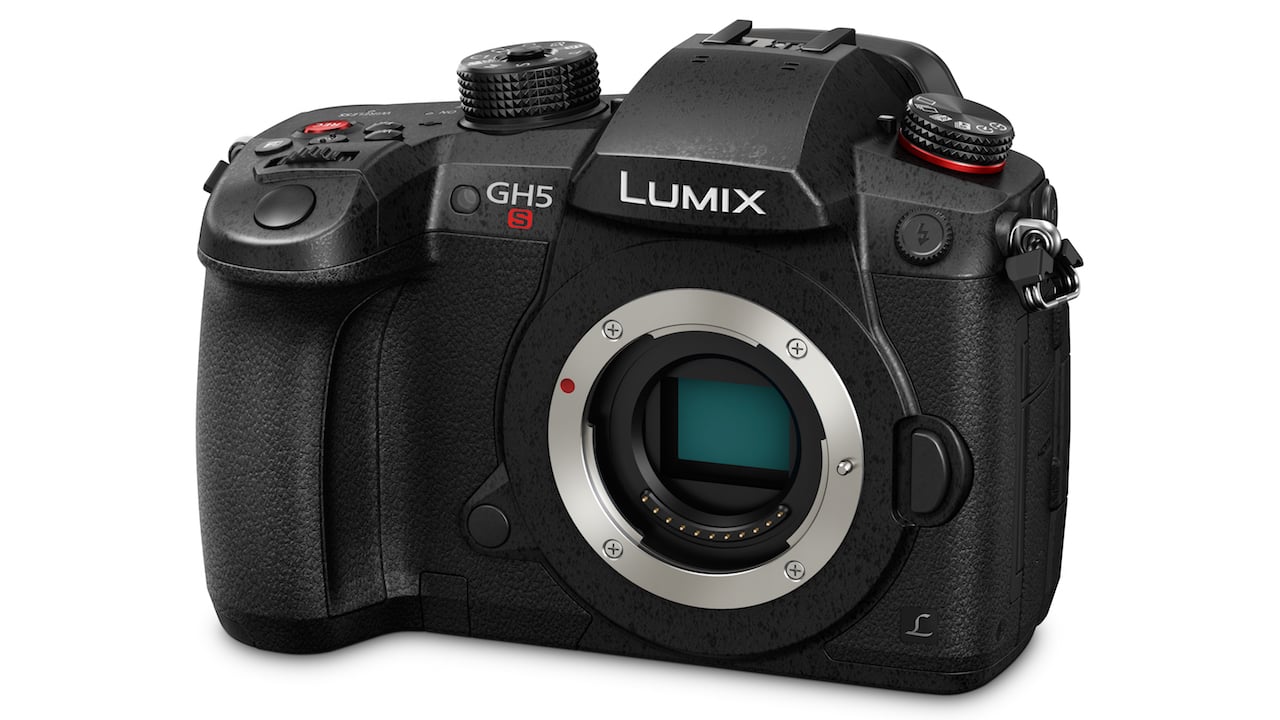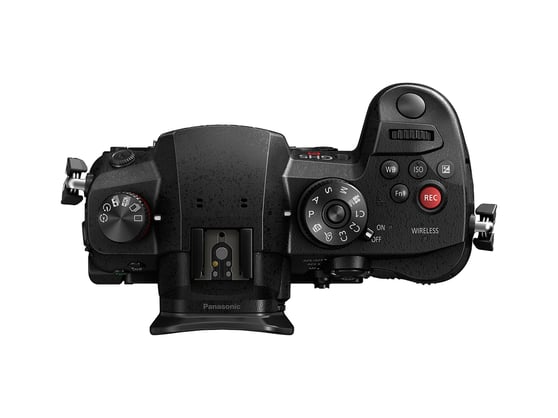
 52% of GH5 owners use their camera for video work. Now they get a model of their own
52% of GH5 owners use their camera for video work. Now they get a model of their own
Panasonic's much-leaked new camera, the GH5S, is now in the public domain. It sacrifices pixel count for sensitivity - for very good reasons. We've seen it and the pictures are impressive.
Still cameras that could also shoot video started the "cinematic video" revolution ten years ago. Things have moved on since then and now it's easily possible to buy a very good 4K dedicated video camera for the same sort of money that a DSLR with extensive rigging and a sound system would have cost.
So you would have thought that the DSLR/Mirrorless type of camera would have little interest for video makers these days.
While this is mostly true, there are some impressive exceptions. Sony's A7S series of cameras shoot 4K full frame video in lighting conditions that would baffle far more expensive, "more professional" cameras. And Panasonic's "GHx" range is hard to beat for picture quality at the price.
This time last year, the GH5 was revealed. It was the first mirrorless camera to offer 4K 50p/60p recording: an astonishingly capable video camera in the shape of a mirrorless still camera. And it will continue to be sold, at a lower cost than the GH5S.
Panasonic has a huge range of products The relationship between them is not always obvious. Helpfully Panasonic explained their taxonomy of high quality mirrorless cameras for us:
"GH5 is the ultimate Hybrid camera (equally at home with stills and video).
G9 is the ultimate photography camera
GH5S is the ultimate video camera"
We were also told that 52% of GH5 owners use it as a video product. We always suspected as much.
The new GH5S was designed for independent filmmakers but is also pitched at major cinema film makers as a "B" camera. It lacks the GH5's in-body image stabilisation and doesn't have the 6K "photo mode" - because the sensor doesn't have that many pixels.
But the new sensor does have pixels that are 1.96 times bigger than those on the GH5.
The sensor has a dual native ISO: 400 and 2500 (spot the Varicam heritage here!). If this ability is anything like the way it works on the Varicams, then it is a very big plus for the new camera. It’s an amazing thing: there really is no noise penalty working at the higher of the two native ISOs. Quite how this works isn’t completely clear, but I’ve heard reports that it involves having two separate A/D conversion systems on the sensor, one of them running at a higher voltage. All very vague and I’m sure there’s more to it than that - or everyone would be doing it - but if that’s the basis of it, it does sound plausible.
The new camera has an unlimited video recording time, a 4K photo mode and Timecode in and out. It will support simultaneous internal and external recording, and on-board capture is ten bit.
The V-log is included as standard. HLG is available in "Creative Video Mode".
The GH5S will support 4:3 anamorphic recording.
Sony's A7S was a bold and largely successful effort to build a full-frame mirrorless camera that was happy to shoot in low light conditions. It's been successful as a commercial product for Sony and it its role as a low-light camera that can shoot cinematic images. It achieved this through a well-understood engineering principle.
There's a certain inevitability in designing a low light camera. Noise is the enemy, and it's caused by the pseudo-random way that photons arrive on a camera's sensor. In good light, there are so many photons that there's no ambiguity about the light level. In low light, or if a sensor's pixels are too small, not enough photons will arrive in a given period to give a reliable average. So adjacent pixels, even if pointed at the same colour, will give randomly different results.
Bigger pixels reduce this problem, because they increase the likelihood of capturing photons on any given pixel. But you can't fit as many big pixels into the same space as smaller pixels. This is what has to give way: resolution.
And this immediately brings us into some deeply controversial territory.
On the one hand, more pixels are better, giving a smoother, more natural picture. On the other, smaller pixels are prone to more noise. You'll get better images (better colour, better contrast with lower noise) with bigger pixels, but they won't be as detailed or smooth.
You simply have to accept the pluses and minuses of each approach.
Panasonic claims that the GH5S is its best ever Lumix. It's certainly built like a professional video camera. The sensor is a brand-new 10.2 megapixel Digital Live MOS device and is supported by a Venus Engine DSP system. This is an even lower resolution than Sony's A7S, which has 12 megapixels, but remember that 4K needs only a resolution of 8 megapixels.
For most purposes the low pixel count of this sensor reminds us that you can take perfectly OK pictures from around 8 megapixels upwards.
Panasonic claims a maximum ISO of 51200. That's extremely useful and of course it's not that you can shoot videos at such extremes that matters necessarily but that you can capture good looking footage way beyond the normal limits. It's always hard to talk objectively about low light shooting because there will always be some noise, and the amount (and the quality) of that noise will be acceptable to some and not others.
I have seen the pictures. Panasonic brought us to their HQ building south of London just before Christmas. We were shown some pretty forensic analysis and comparisons with other cameras.

My impression was that in low light, the GH5S is a significant improvement over the GH5. Street-lit scenes had more colour in them. Skin tones looked more real and less washed-out. Highlights were better and less blown-out.
I would have liked to have seen more daylight footage away from the influence of sodium street lights, but we were shown enough variety that I was able to conclude that the new camera is a very worthwhile improvement over the GH5. In comparison with the Sony A7S, the GH5S's colours were more solid and had greater warmth. The Sony is, of course, Full Frame while the Panasonic is MFT and what a camera looks like at extremes is not always a good guide to how it will behave in normal lighting.
It's easy to see when Panasonic has gone down this route. While it's tempting to think that Panasonic has in the loosest sense "emulated" the formula in Sony's A7S in that it has made a more sensitive camera by making a lower resolution sensor with bigger pixels, this is no more a case of copying than it would be to make a faster car by putting a bigger engine in it.
What's more, Panasonic has in-house skills in low light video cameras with the Varicam range and the EVA-1, all of which feature dual native ISO and an ability to shoot in low light.
The GH5S's ability to record ten bit 4K video internally is an increasingly significant factor in this competitive field. While eight bit video can look very good, it's generally accepted that ten bit video is needed for grading.
The GH5S will ship on 12th January, costing £2119 including VAT and it's hard to see this being anything other than a huge success for Panasonic.
See Panasonic's full press release over the page.
Panasonic Announces the Ultimate Hybrid CSC with a newly developed 10.2MP High sensitivity Live MOS sensor
Introducing the LUMIX GH5S: An exceptional mirrorless camera for videography, designed and developed for professional filmmakers
Introducing a 10.2MP High sensitivity MOS sensor for improved image quality in low light
Timecode IN/OUT for easy implementation within multi camera shoots
True “Multi-Aspect Ratio” Function in both photo and video
Panasonic is proud to introduce the new hybrid LUMIX GH5S with expanded video recording capability and enhanced image quality. Designed and developed for professional filmmakers, the LUMIX GH5S achieves our highest-ever sensitivity and video image quality in the history of LUMIX cameras.Packed with big features to delight videographers and photographers alike
The new 10.2-megapixel Digital Live MOS Sensor and Venus Engine reproduce the darkest areas of the image with increased clarity thanks to the maximum ISO 51200. When shooting in dark environments, videographers can now focus on capturing the perfect shot without worrying about background noise thanks to the newly applied Dual Native ISO Technology.
The LUMIX GH5S is compatible with Timecode IN/OUT which is easy to set using the flash sync terminal and bundled coaxial cable for a BNC terminal. The camera can be used as a Timecode generator for other GH5S models and professional camcorders and the functionality makes multi-camera productions pain-free by instantly synchronizing recordings to other cameras or audio devices.
Both videographers and photographers can now enjoy the same diagonal field of view across all aspect ratios with the True “Multi-Aspect Ratio” function. The newly developed multi-aspect sensor provides sufficient margin to get the same angle of view in 4:3, 17:9, 16:9 and 3:2 aspect ratios.
This feature means you can easily switch between different aspect ratios making the process easier while producing and editing in post-production. The GH5S now also provides the photographer with 14-bit RAW recording, providing greater flexibility within professional RAW development workflows.
The LUMIX GH5 was the world’s first mirrorless camera to achieve 4K 60p / 50p video recording1 and the new LUMIX GH5S again establishes a milestone by realising the world’s first 4K 60p / 50p video recording in Cinema 4K (4096x2160).2 The GH5S is capable of internal 4:2:2 10-bit recording3 for even stronger colour reproduction, while V-Log comes pre-installed on the camera.
There is no time limit4 for both Full-HD and 4K video recording and the LUMIX GH5S complies with 4K HDR video with Hybrid Log Gamma (HLG) mode in Photo Style. A low-bit-rate recording mode 4K HEVC for HLG is available, which enables playback on AV equipment compatible with the HEVC compression format, such as Panasonic 4K HDR TVs.
The LUMIX GH5S also records 4:2:2 10-bit 400-Mbps All-Intra in 4K 30p/25p/24p and C4K 24p and 200-Mbps All-Intra in Full-HD. The VFR lets users record overcranked / undercranked video in C4K/4K (60 fps, maximum 2.5x slower in 24p) and FHD (240 fps5, maximum 10x slower).
DFD (Depth From Defocus) technology and ultra-high-speed digital signal processing achieve fast auto focusing of approximately 0.07 sec6 and 12 (AFS) 7 / 8 (AFC) fps in 12-bit RAW and 11 (AFS) / 7 (AFC) fps in 14-bit RAW high-speed burst shooting. The 4K PHOTO mode enables 60 fps high-speed capture in approximately 8-megapixel equivalent resolution.
Comfortable operation especially in low light
As a camera that excels at shooting in low light, the LUMIX GH5S boasts -5EV luminance detection performance with Low Light AF thanks to the increased sensitivity and optimised tuning of the sensor. Live View Boost is another practical feature that makes it possible to check the composition - even in total darkness - by boosting the sensitivity just for Live View. The magnification ratio in MF assist is increased from conventional 10x to 20x, which is convenient for astronomical photography.
For night mode the red interface provides mild backlighting, letting users see the subject comfortably in dark surroundings.
In order to make the GH5S tough enough to withstand even heavy field use, it is composed of a magnesium alloy full die-cast front/rear frame and is not only splashproof8 and dustproof but also freezeproof down to -10 degrees. The GH5S is equipped with a dual SD memory card slot, compatible with the high-speed, high-capacity UHS-II and Video Speed Class 60. Users can flexibly choose the recording method from Relay Recording, Backup Recording or Allocation Recording. The HDMI Type A terminal is provided.
Exceptional image capture without concern
The GH5S has a large LVF (Live View Finder) with a stunningly high magnification ratio of approximately 1.52x/0.76x (35mm camera equivalent) providing smooth display at 120 fps. A high-precision, high-speed OLED display features 3,680K-dot resolution and 100% field of view. In addition to dual dials, an omni-directional joystick enables more intuitive and flexible operation.
The model includes Bluetooth and Wi-Fi® connectivity to offer a more flexible shooting experience and instant image sharing with easy operation. Compatibility with Bluetooth 4.2 (called BLE: Bluetooth Low Energy) enables constant connection with a smartphone/tablet with minimum power consumption. For Wi-Fi, 5 GHz (IEEE802.11ac)9 can be selected in addition to the conventional 2.4 GHz (IEEE 802.11b/g/n) for an even more secure and stable connection.
The Panasonic LUMIX GH5S will be available from end of January 2018 and will retail for £2199 / €2549.99 (body only).
For the latest news and information, follow @LumixUK on Twitter, Facebook & Instagram.
– ENDS –
*1 4K 60p/50p(for a Digital Single Lens Mirrorless Camera), 4:2:2 10-bit (for a digital interchangeable lens camera) as of 4 January, 2017
*2 As of January 8, 2018 as a Digital Single Lens Mirrorless camera that complies with Cinema 4K (C4K:4096x2160) resolution defined by Digital Cinema Initiatives(DCI). According to a Panasonic study.
*3 4:2:0 8-bit in C4K 60p/50p and 4K 60p/50p recording on an SD Memory Card.
*4Until the SD Memory Card becomes full or the battery runs out.
*5The angle of view narrows if you select a frame rate with a number of frames 240 or more.
*6 Contrast AF with DFD Technology works only with Panasonic Micro Four Thirds lenses.
*7 In AFS, at wide-end with H-ES12060 (CIPA) when LVF display speed is set to 120fps.
*8 Splash Proof is a term used to describe an extra level of protection this camera offers against exposure to a minimal amount of moisture, water or dust. Splash Proof does not guarantee that damage will not occur if this camera is subjected to direct contact with water.
*9 5GHz Wi-Fi is not available in some countries.
About motion picture recording/4K PHOTO recording
- Use a card with SD Speed Class with "Class 4" or higher when recording motion pictures in [AVCHD] or [MP4(under 28Mbps)].
- Use a card with SD Speed Class with "UHS-I / UHS-II UHS Speed Class 3 (U3)" when recording motion pictures with [MP4] in [4K], [MOV] or [4K PHOTO]. (SD speed class is the speed standard regarding continuous writing.)
- MP4 motion pictures with [MP4] in [C4K/4K]:
- When using an SDHC memory card: You can continue recording without interruption even if the file size exceeds 4 GB, but the motion picture file will be divided and recorded/played back separately.
- When using an SDXC memory card: You can continue recording without interruption even if the file size exceeds 96 GB or 3 hours 4 minutes in length, but the motion picture file will be divided and recorded/played back separately.
- MP4 motion pictures with [MP4] in [FHD]:
- You can continue recording without interruption even if the file size exceeds 4 GB or 30 minutes in length, but the motion picture file will be divided and recorded/played back separately.
For [C4K/4K 60p][C4K/4K 50p] video output, use an HDMI 2.0 cable that has the HDMI logo on it, and that is described as"4K compatible".
Tags: Production


Comments